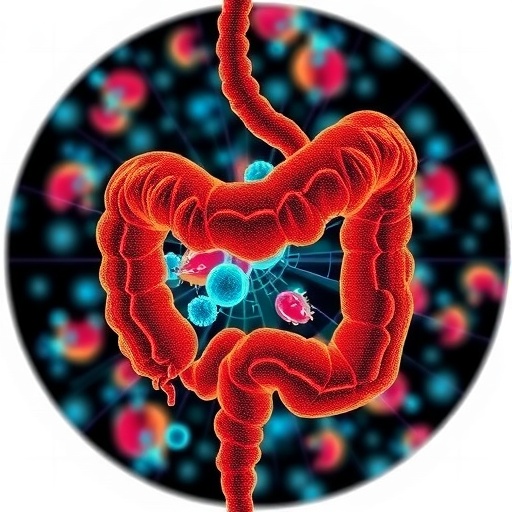A groundbreaking study led by Professor Shuang-jiang Liu and his team at Shandong University has unveiled novel insights into the interplay between gut microbiota, bile acids, and endotoxemia in metabolic disorders. Their research meticulously elucidates how the gut probiotic Christensenella tenuis exerts profound therapeutic effects by modulating bile acid metabolism and inhibiting systemic lipopolysaccharide (LPS) translocation, ultimately addressing diet-induced obesity (DIO) and related metabolic dysfunctions.
Endotoxemia, primarily triggered by translocated LPS derived from Gram-negative bacteria in the gut, is a pivotal pathogenic mechanism in the development of obesity, diabetes, and multifactorial metabolic diseases. Persistent systemic exposure to LPS provokes chronic low-grade inflammation, insulin resistance, and dysregulated lipid metabolism. While previous investigations acknowledged probiotics’ role in mitigating plasma LPS concentrations, the precise molecular pathways remained inadequately characterized.
In this context, Professor Liu’s team delved into the multifaceted “BAs-LPS” nexus, revealing distinct biochemical and immunometabolic pathways through which C. tenuis ameliorates host metabolic parameters. Employing a DIO mouse model, their research demonstrated that oral administration of this probiotic species significantly enhanced glucose tolerance and lipid profiles while attenuating inflammation markers concomitantly with a consistent reduction in circulating and hepatic LPS levels.
At the mechanistic level, the study reveals that C. tenuis represses the LPS-driven TLR4 (Toll-like receptor 4) signaling cascade, a well-known mediator of inflammatory responses and metabolic disturbances. By attenuating this pathway, C. tenuis indirectly restores metabolic homeostasis, suppressing downstream effectors involved in chronic inflammation and metabolic derangements. However, the novelty of this research lies in linking bile acid metabolism alterations induced by C. tenuis to its protective effects.
Comprehensive omics analyses uncovered that treatment with C. tenuis elevated the abundance of free bile acids in the gut, a critical shift from the predominance of conjugated bile acids typically seen in DIO conditions. In vitro experiments confirmed that C. tenuis possesses bile salt hydrolase (BSH) activity, enzymatically hydrolyzing conjugated bile acids into their free forms. This enzymatic activity reshapes the bile acid pool, altering intestinal milieu and systemic metabolic signals.
Further structural and biophysical investigations, including molecular dynamics simulations, elucidated that free bile acids form stable complexes with LPS molecules. These complexes are characterized by their non-permeability to cell membranes, effectively sequestering LPS within the gut lumen and preventing its translocation across the epithelial barrier into systemic circulation. This mechanism serves as a novel barrier-enhancing strategy that mitigates endotoxemia at its source.
Supporting these findings, isothermal titration calorimetry assays provided thermodynamic evidence of direct binding interactions between free bile acids and LPS. The binding process was demonstrated to be enthalpy-driven, suggesting strong molecular affinity and specificity. This quantitative biophysical validation corroborates computational models and signifies a robust interaction critical for inhibiting LPS absorption.
Remarkably, the team also conducted intervention experiments administering free bile acids alone to DIO mice. These treatments mimicked the probiotic’s effects by decreasing plasma LPS concentrations and improving metabolic indices, reinforcing the centrality of bile acid-mediated LPS sequestration as a universal and physiologically relevant mechanism.
This multi-disciplinary study, integrating microbiology, metabolomics, computational biology, and immunometabolism, substantially advances the understanding of gut barrier integrity regulation by probiotics. C. tenuis emerges not only as a beneficial commensal modulator of bile acid metabolism but also as a key agent capable of intercepting deleterious endotoxemia-related signaling pathways fundamental to metabolic disease pathogenesis.
The investigators propose that therapeutic strategies targeting the BAs-LPS axis, possibly through engineered probiotics or bile acid analogs, offer promising avenues for combating the global burden of obesity and its associated metabolic disorders. These findings highlight the importance of microbial-host co-metabolic interactions and suggest that modulation of gut microbial enzymatic functions may revolutionize gut-targeted intervention approaches.
This work was co-authored by Dr. Yu Jiang, Dr. Minzhi Jiang, and Dr. Jingyi Zhu, under the guidance of corresponding authors Professor Shuang-jiang Liu, Professor Chang Liu, and Associate Researcher Dr. Xukai Jiang. Their research marks a significant milestone in deciphering how gut microbiota-derived bile acid transformations can directly influence systemic inflammatory mediators and metabolic equilibrium.
By unveiling a previously unrecognized molecular mechanism wherein C. tenuis hydrolyzes bile acids to free forms that sequester LPS and prevent its systemic translocation, this study enriches the toolkit for future explorations into microbiome-based therapies. It underscores the therapeutic potential of precision modulation of gut metabolites and microbial enzymes to restore homeostasis disrupted by modern lifestyle-related diseases.
Ultimately, the study’s integration of in vivo, in vitro, and in silico methodologies provides a robust, multi-angle validation of the protective role of C. tenuis in metabolic health. It paves the way for innovative probiotic and bile acid-centered clinical applications designed to reduce metabolic endotoxemia and improve life quality for millions afflicted by obesity and related conditions.
Subject of Research:
Gut microbiota-probiotic interactions, bile acid metabolism, endotoxemia, and metabolic disorders.
Article Title:
Christensenella tenuis alleviates metabolic disorders by inhibiting gut LPS translocation.
News Publication Date:
Not specified.
Web References:
http://dx.doi.org/10.1007/s11427-025-3014-6
References:
Not explicitly detailed in the news content.
Image Credits:
©Science China Press
Keywords:
Christensenella tenuis, gut microbiota, bile acids, bile salt hydrolase, lipopolysaccharide, endotoxemia, metabolic disorders, diet-induced obesity, TLR4 signaling, probiotic therapy, gut barrier integrity, molecular dynamics simulation, isothermal titration calorimetry
Tags: bile acid metabolism and obesityChristensenella tenuischronic low-grade inflammationdiet-induced obesity researchendotoxemia and systemic inflammationglucose tolerance enhancementgut microbiota and metabolic disordersimmunometabolic pathways in obesityinsulin resistance and lipid metabolismprobiotics and LPS translocationShandong University research findingstherapeutic effects of C. tenuis





